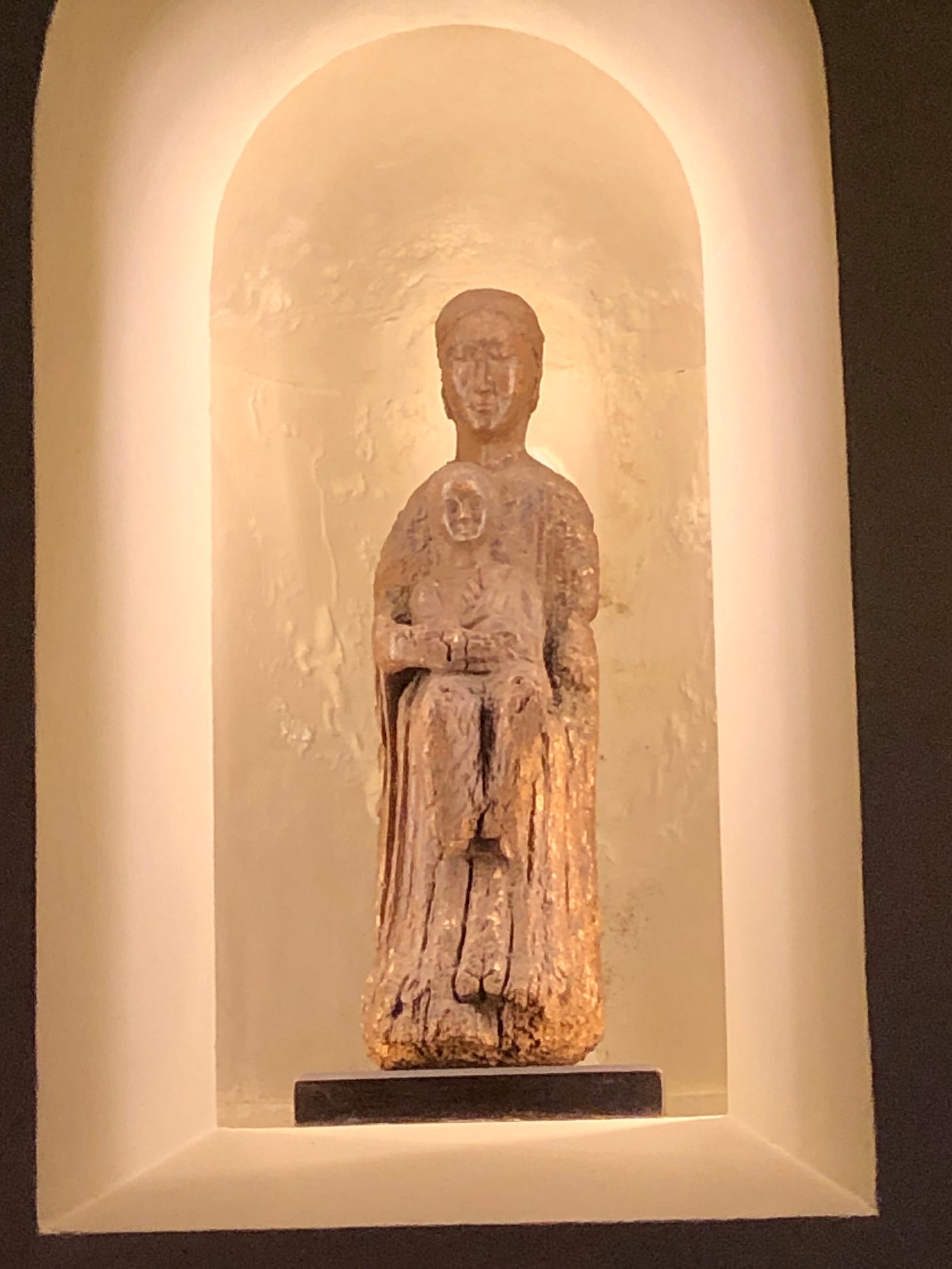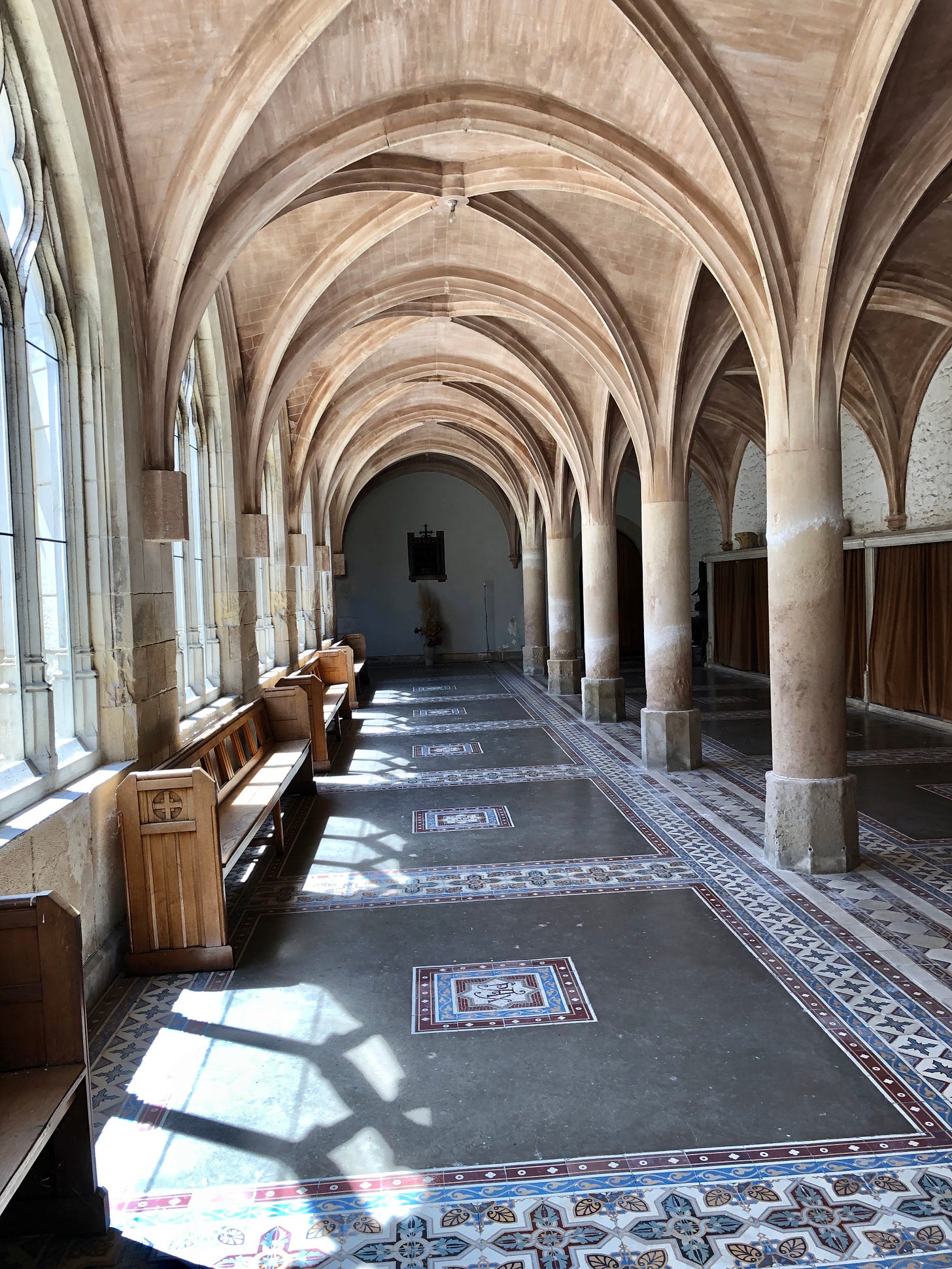Visit to Ligugé Benedictine Abbey
While on my pilgrimage to Bonnevaux Abbey in Poitiers France, we took the opportunity to visit a much older Benedictine Abbey - Ligugé Abbey, formally called the Abbey of St. Martin of Ligugé. It was a pilgrimage within a pilgrimage. The monastery, founded in 361, is the oldest monastery known in Western Europe.
The monastery is at a site offered by the bishop Hilary of Poitiers, to Hilary's protégé Martin of Tours, to whom it was later dedicated. The reputation of the founder attracted a large number of disciples to the new monastery. The monks initially lived according to the pattern of the Desert Fathers of Egypt, each in his locaciacum (small hut), this name later evolving to Ligugé.
St Martin of Tours is the patron saint of many communities and organizations across Europe, including France Third Republic. He is best known for cutting his cloak in two with his sword to give half to a beggar clad only in rags in winter. Sandee immediately got a liking to him when she learnt he is the patron saint of vintners, who grow and produce wine.
Walking through the ancient parts of the monastery, I reflected on it being over 1,500 years old. I wondered how it remained relevant to so many generations, even to today. Very few of today’s organizations make it to 100 years. I believe it is a testament to the resilience of the Rule of St Benedict.
The monk who gave us a guided tour grew on us as the tour progressed. At first he was nervous and shy reading from his book in halting English. However, when he finally understood that we were asking him if ladies live on the compound, he gave a hearty laugh and he was more jovial after.
The monastery has an amazing library of over 300,000 books with the oldest manuscript being St Gregory the Great treatise on St Benedict, which is over 1,000 years old.
We were shown both the old and the new, the refectory where they ate and the prayer room. I could see the difference in style, with the modern more polished tiles and the old course limestone plaster. Personally, I preferred the old more rugged appearance.
It is claimed that the book and later the movie ‘The Name of the Rose’ with Sean Connery was based on this monastery since the author lived there for a while. It is about a series of mysterious deaths in the monastery. I have read the book and seen the movie, I find the book a page turner.
Deep below, there are excavations proceeding. They discovered a sarcophagus of a child, an old Roman bath from the 2nd century, and the tomb of an abbot. I marveled at the history and thought of the passing parade of humans. Each of us inhabit a place and time, why do we fight wars and spend so much time trying to acquire power and wealth? The worldly kingdoms are here today and gone tomorrow. It is only the Kingdom of heaven and our place in it will persist to eternity.
There is also a painting from the 11th century and a small wooden statue of the Virgin Mary with the boy Jesus on her lap, that is from the 12th century. I liked its simplicity. Mary looks like a typical hardworking homemaker. Jesus like a boy who was running in the yard and called to sit on her lap for a while. I thought that sometimes our more modern icons make them look too unreal.
Our monk spoke of the numerous wars and revolutions over the years which often brought it to collapse. But time and again it would rise from the ashes.
I learnt of the devastating effect of the French Revolution on religious houses. It was, at that time, confiscated and given to a powerful family. However, when it came back up for sale, years later, it was purchased back by the monks. At present there are 16 monks in residence.
The size and majesty of the monastery left a lasting impact on me. I thought of Jesus, walking around Palestine with a few everyday persons as disciples giving rise to this institution. I thought of the 16 monks in residence, giving up their worldly freedom to dedicate their lives to living in community, prayer and work.
As I left this spectacular abbey, I said a silent prayer to my patron saint, St Hilary of Poitiers—who gave this site to St Martin to found his monastery—asking him to bless Sandee, our ministry, and our home, where we hope to establish a place for offering retreats.








